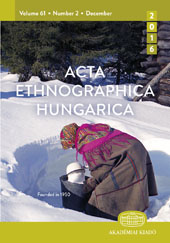Legends about the grabancijaš dijak in the 19th century and in contemporary writings
Legends about the grabancijaš dijak in the 19th century and in contemporary writings
Author(s): Ljiljana MarksSubject(s): Customs / Folklore, Oral history, Social history, 18th Century, History of Religion
Published by: Akadémiai Kiadó
Keywords: grabancijaš đijak; Vatroslav Jagić; Oskar Asbóth; Moses Gaster; Zagreb; Croatia; oral stories; legends; contemporary notations;
Summary/Abstract: In this paper, I shall be following Jagić’s study on the legends about the grabancijaš dijak, which was published in German in 1877. The paper in question discussed the legends about the grabancijaš dijak, a shabby itinerant cleric, wanderer and light-hearted adventurer, a travelling student (fahrender Schüler), a former student of the 13th School, part-priest, part-wizard. Besides folklore notations, the personage appears in Croatian literature of the 18th century and is usually linked with the Zagreb Seminary. The echoes of the study in the works of Oskar Asbóth and Moses Gaster are also looked into; prompted by Jagić’s work they published in the same journal – the Archiv für slavische Philologie – the results of their own research into the grabancijaš in Hungarian and Romanian tradition. The morphological designations and functional connections between similar mythic personages in Croatian oral-literary tradition – such as the dragon, basilisk, serpent, krsnik, táltos, mogut, and warlock – are analysed in considerable detail. The grabancijaš is also observed as a mythic personage who deviated most from functionally similar personages, and was fully adapted to Christianisation. This is also shown in the relatively numerous Croatian written notations from Zagreb and the Zagreb area.
Journal: Acta Ethnographica Hungarica
- Issue Year: 54/2009
- Issue No: 2
- Page Range: 319-336
- Page Count: 18
- Language: English
- Content File-PDF

